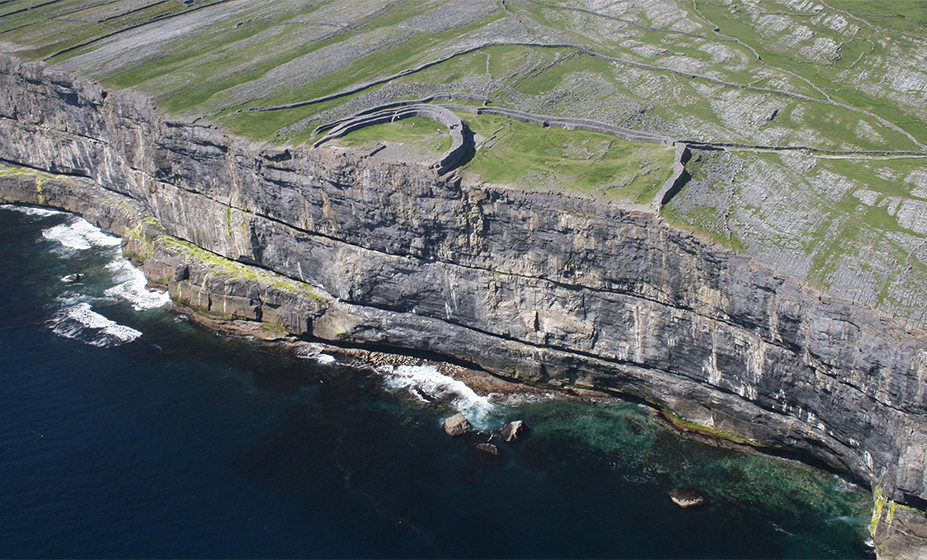| The Aran Sweater takes its name from the set of islands where it originated many generations ago, off the West coast of Ireland. The Aran Islands lie at the mouth of Galway Bay, at the mercy of the relentless Atlantic Sea. The Islanders were fishermen and farmers whose lives and livelihoods were deeply intertwined. The Aran Sweater was born of this environment, passed down from generation to generation, and has since become the ultimate symbol of Irish Clan heritage. |
Aran Sweater Origins
| From its origins, the Aran sweater has been intimately linked to clans and their identities. The many combinations of stitches seen on the garment are not incidental, far from it. They can impart vast amounts of information to those who know how to interpret them. Aran sweaters were, and remain, a reflection of the lives of the knitters, and their families. On the Aran islands, sweater patterns were zealously guarded, kept within the same clan throughout generations. These Aran sweaters were often used to help identify bodies of fishermen washed up on the beach following an accident at sea. An official register of these historic patterns has been compiled, and can be seen in the Aran Sweater Market on the Aran Islands. |
About the Aran Sweater
| The Aran Sweater has many attributes which made it suitable clothing for the island's community of fishermen and farmers. It is water repellent, not allowing the rain to penetrate the sweater thus keeping the wearer dry. An Aran sweater can absorb 30% of its weight in water before feeling wet. The natural wool fibre used in the sweaters is breathable, drawing water vapour away from the skin and releasing it into the air, thus helping the body to maintain an ideal temperature. Most importantly, of course, an Aran sweater kept the wearer warm on the cold days and nights at sea or on the farm. Wool has an excellent insulating capacity due to the high volume of air in it, and this helps protect the wearer from excessive cold and heat. |
Our Heritage, Our Home
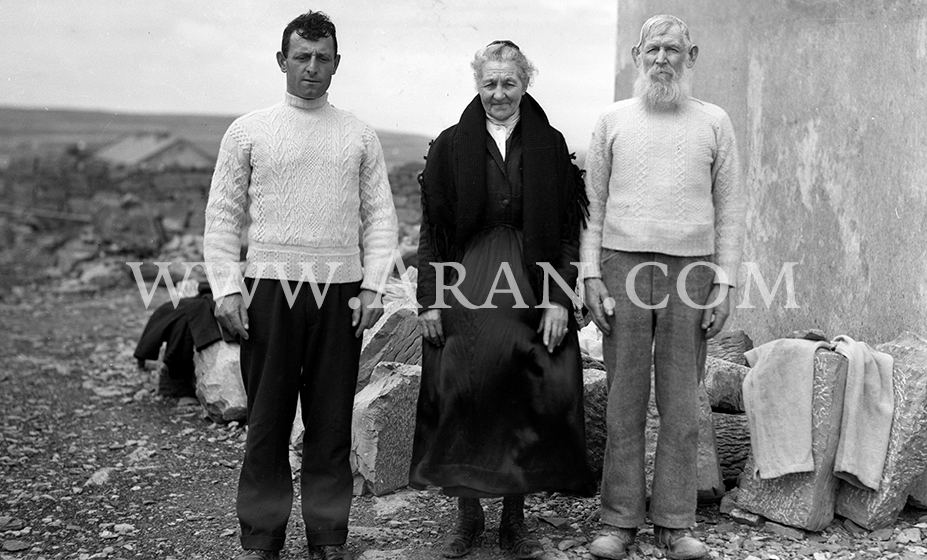
|
We regard the Aran Sweater as an eternal symbol of the Islands, its long history, unique culture and time honoured traditions. We believe the beauty of the Islands lies in its ability to remain independent from that of modern ways on the mainland. We are driven by a shared passion for the history of the Aran Sweater and see it as our duty to keep the story, beauty and true essence of the sweater and the spirit of the Islands alive. We love to pay homage to our roots through our precious sweaters as well as our brand. We truly believe that buying a sweater is much more than a weather protector or a nod to current fashion statements, but rather an investment in one’s ancestry, a memento of your time in Ireland or a wistful reminder of a magical place yet to be explored. Here we take you through the journey of the Aran garment from its humble birthplace right through to its now global fashion status. |
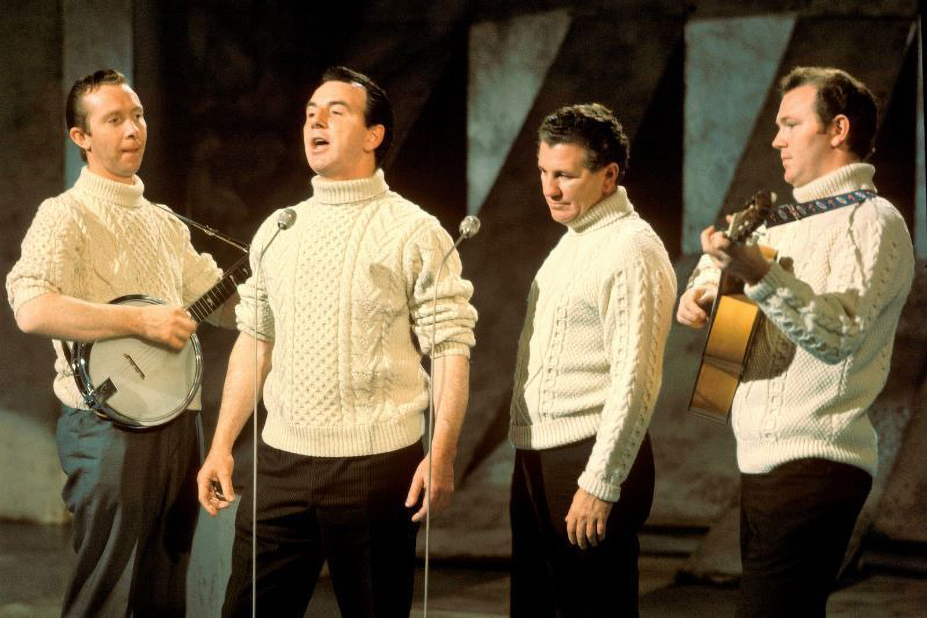 (left-to-right: Tommy Makem, Paddy Clancy, Tom Clancy and Liam Clancy) (left-to-right: Tommy Makem, Paddy Clancy, Tom Clancy and Liam Clancy)The Clancy Brothers were an influential Irish folk group that initially developed as a part of the American folk music revival. Most popular in the 1960s, they were famed for their trademark Aran jumpers and are widely credited with popularizing Irish traditional music in the United States and revitalizing it in Ireland. |
The Birthplace of Aran
| The Aran Islands, off the coast of Galway in western Ireland, is a place of wild and rugged beauty, rich in antiquities and prehistoric Celtic remains.
The Islands have long since been a source of creativity for all who encounter its rugged shoreline. It is also famed for its people of courageous heart and resourceful nature, who fought so hard to find life on land which was never supposed to be inhabited. For centuries, the Islanders have lived by working the land, farming, fishing, harvesting and of course by knitting the famous banín sweaters that have made them famous throughout the world today. |
The Coming of the Celts: 500BC
| While the exact origins of the Aran Sweater are lost in history, the intricate and unique designs were thought to be inspired by the Celts, who arrived on the shores of Aran around 2000BC and whose design influence and ancient relics are still very much a part of today's rugged Aran landscape.
The strong graphical relationship between Celtic design and Aran patterns can be seen clearly in Celtic stones, crosses and Celtic jewellery. By the first century AD, the very first heavy Aran garments such as blankets were being produced on the Islands using primitive needles. |
Religious Roots
| By the 8th century, Christianity was widespread on the Island and Christian manuscripts such as the famous Book of Kells make references to elaborately designed garments similar to the Aran Sweater.
|
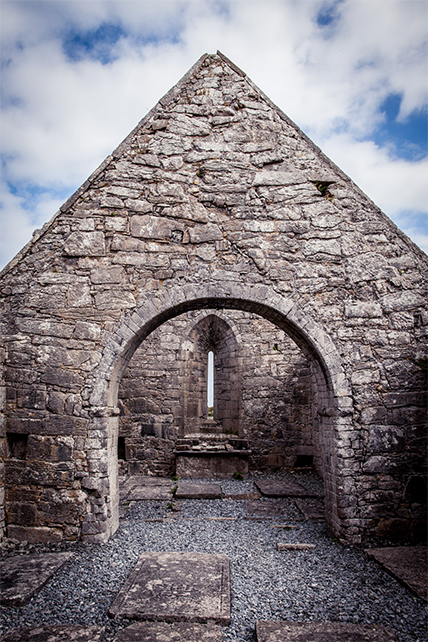 |
Aran sweater stitches - meanings & symbols
|
As a craft, the Aran Sweater continues to fascinate audiences around the world. A finished Aran sweater contains approximately 100,000 carefully constructed stitches, and can take the knitter up to sixty days to complete. It can contain any combination of stitches, depending on the particular clan pattern being followed. Many of the stitches used in the Aran Sweater are reflective of Celtic Art, and comparisons have been drawn between the stitches and patterns found at Neolithic burial sites such as Newgrange in Co. Meath. Each stitch carries its own unique meaning, a historic legacy from the lives of the Island community many years ago. The Cable Stitch is a depiction of the fisherman's ropes, and represents a wish for a fruitful day at sea. The Diamond Stitch reflects the small fields of the islands. These diamonds are sometimes filled with Irish moss stitch, depicting the seaweed that was used to fertilise the barren fields and produce a good harvest. Hence the diamond stitch is a wish for success and wealth. The Zig Zag Stitch, a half diamond, is often used in the Aran Sweaters, and popularly represents the twisting cliff paths on the islands. The Tree of Life is one of the original stitches, and is unique to the earliest examples of the Aran knitwear. It again reflects the importance of the clan, and is an expression of a desire for clan unity, with long-lived parents and strong children. |
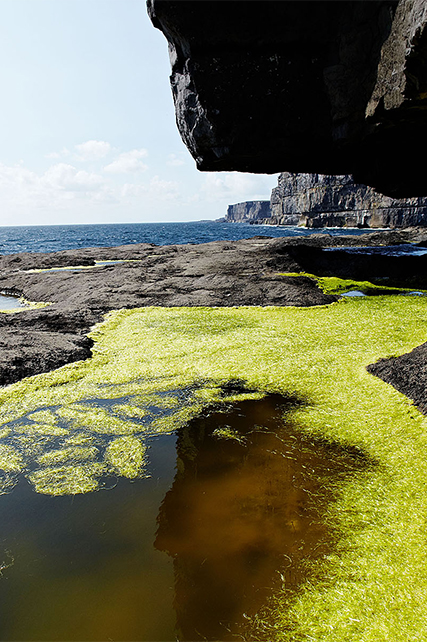 |
Throughout the years, the Islanders started to develop a range of other Aran stitches inspired by life on the Islands. One of the most popular Aran stitches, the Irish Moss stitch, represents the type of Carrageen Moss found on the cliffs of the Islands which the Islanders often gathered as a source of food. |
| The diamond stitch is also a popular stitch said to represent the enclosed stone walls which were built to divide the lands of different ruling clans and which today remain a distinguished feature unique to the islands and Western Ireland. |
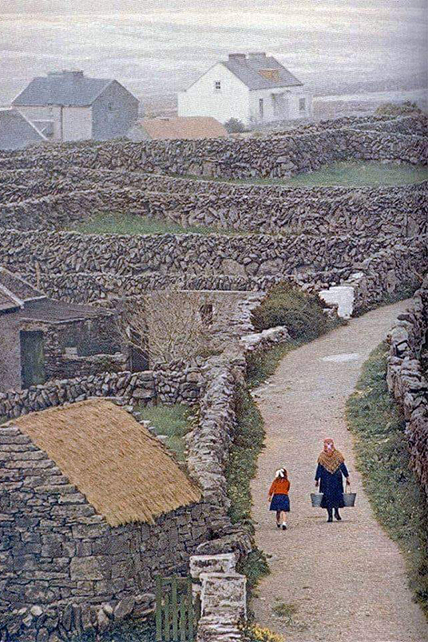 |
 |
Stitches such as the Cable & Trellis were said to symbolise the ropes of the Fishermen who risked their lives on the Atlantic Seas. As the craft developed, more meaningful stitches and patterns emerged, influenced by the Aran design with each Clan or family inheriting a combination of their very own stitches and patterns. |
The Beginning of a Global Industry
| By the 19th Century, knitting was well established on the Islands as a source of income. It was around this time that the British Government set up the Congestive Districts Board to look after the welfare of the Islanders and established knitting as a commercially viable Industry. And so began the long and laborious process of producing a perfectly handmade Aran garment, paving the way for what was to become a global industry. |
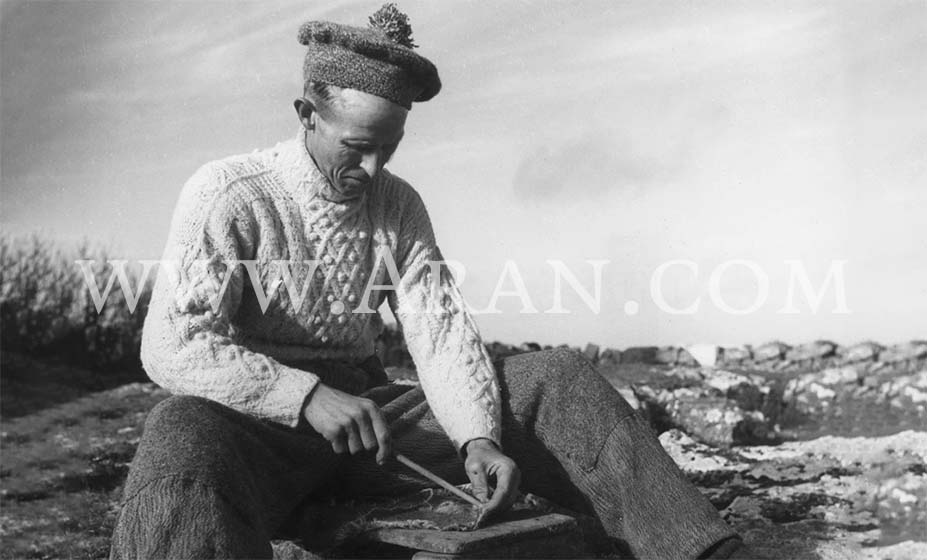
An Honoured Fashion Treasure
| The Aran Sweater has become a growing symbol for Ireland as well as the Aran Islands. Gaining widespread popularity in Vogue Magazine in 1956, it has since graced the catwalk of many famous Fashion Icons, such as John Paul Galtier and Kenzo.
The timeless fashion garment continues to be adopted by highstreet brands and fashion houses alike, as the intricate stitches, magical history and beauty of the original still to this day, captures the hearts and minds of people the world over. 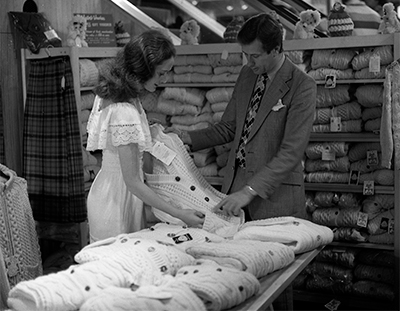  |
Aran Sweaters today
| Today, the demand for the Aran Sweater continues to grow. The lack of skilled knitters, and the economic gains to be had from machine-production of the sweaters, has resulted in a huge fall in the number of hand-knits available. Hand knit Aran Sweaters have become rare and valuable.
They are highly sought after for their quality, their history, and the clan heritage they represent. Despite the huge increase in fashion goods available in Ladies Aran Knitwear, Men's Aran Knitwear and Children's Aran Knitwear, the Aran Sweater remains an item of timeless beauty, synonymous with pride in an Irish heritage. As the craft spreads far beyond its humble origins on the wind ravaged islands of the west coast of Ireland, so too does its recognition as a fine work of art and an emblem of Irish Clan identity. You can also visit our sister website, Weavers of Ireland where we pay homage to the ancient craft of weaving and where you'll find a large selection of Irish tweed and Irish wool woven products. |

 STORES
STORES
 Euro
Euro
 US Dollar
US Dollar
 Pound Sterling
Pound Sterling
 Australian Dollar
Australian Dollar
 Canadian Dollar
Canadian Dollar
 Japanese Yen
Japanese Yen





 Aran Sweater Market on Inis Mór, Aran Islands producing genuine Aran sweaters & using skilled, local Aran sweater knitters
Aran Sweater Market on Inis Mór, Aran Islands producing genuine Aran sweaters & using skilled, local Aran sweater knitters